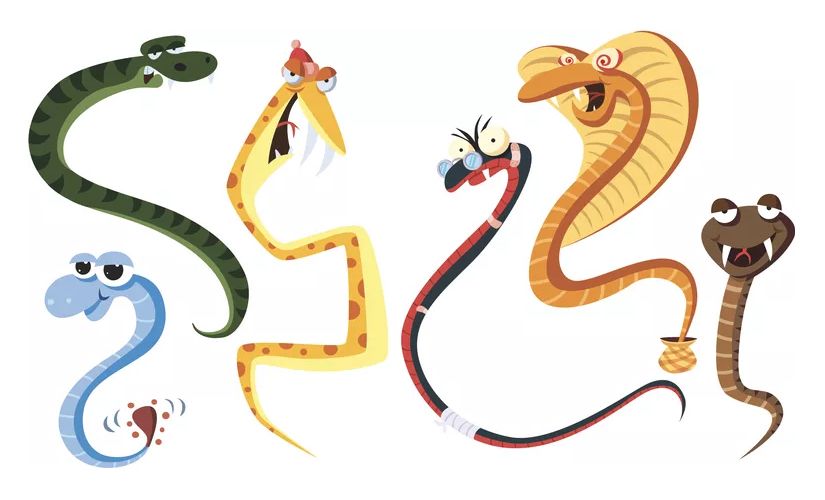Generalization is a situation where people may miss a lot of details when making a simple claim. In particular, it is a case when someone makes a general judgment on a specific concept. This situation is also common when students at colleges and universities learn about a concept of generalization. However, such a process leads to missing a lot of details since only important points are covered. As a result, a whole representation of elements can be changed, while critical thinking develops a better understanding of it. Therefore, a generalization process means summing up broad aspects to make a valid judgment.
General Aspects
Generalization is one of the writing strategies through which people extend some characteristics of an element compared to objective writing. Basically, to make a generalization statement, writers identify common patterns from specific examples, create a broad conclusion, and support it with evidence while acknowledging any exceptions. In this case, an element can be people, animals, events, or other objects, but a particular writing process may lead to vague information, which can be problematic, similar to incorrect methods of DSM-5 APA citation. As students extend knowledge, they make wrong inferences. On the other hand, this method motivates them to have a simplified representation of learned concepts. Although it is a problem that causes students to have an incorrect understanding of things, teachers can solve this issue by training them to be critical thinkers and providing related knowledge to real-life situations.
What Is a Generalization and Its Purpose
According to its definition, generalization is a specific statement or concept that applies a broad perspective to a group of people, situations, or phenomena based on specific cases, perspectives, or examples. For example, the main purpose of generalization in writing is to simplify complex aspects by highlighting common characteristics or patterns, thereby making them more accessible and easier to understand (Dunn, 2023). This technique also helps in drawing unique connections and making predictions based on observed patterns. However, it is crucial to use generalizations carefully in any essays or research papers, as overgeneralizing in writing can lead to inaccuracies and develop new stereotypes. In this case, students need to remember their broad assertions must not misrepresent reality. As a result, effective writing balances such statements with specific details and examples to ensure clarity, accuracy, and a fair representation of a particular subject matter (De Smedt et al., 2024). In turn, the length of one generalization sentence can vary depending on an academic level, its context, and a writer’s intent, while common guidelines are:
High School:
- Length: 5-15 words
- Example: “Most high school students use social media daily.”
College:
- Length: 15-20 words
- Example: “College students often balance coursework with part-time jobs, which can impact their academic performance and stress levels.”
University (Undergraduate):
- Length: 20-25 words
- Example: “Undergraduate students in large universities frequently experience diverse cultural and interpersonal interactions, which contribute to their personal and academic growth.”
Master’s:
- Length: 25-30 words
- Example: “Master’s students typically engage in advanced research projects that require a high level of critical thinking, decision making, and specialized knowledge, preparing them for professional careers or further academic pursuits.”
Ph.D.:
- Length: 30-35 words
- Example: “Ph.D. candidates often contribute original research to their fields of interest, demonstrating an in-depth understanding and analysis of complex theories, approaches, and methodologies, which is essential for advancing academic knowledge and addressing real-world problems.”
Types
| Type | Content | Example |
|---|---|---|
| Universal | Applies to all members of a category without exception. | “All birds have wings.” |
| Statistical | Covers a majority or a significant portion of a category. | “Most college students own a smartphone.” |
| Causal | Indicates a cause-and-effect writing relationship within a category. | “Smoking causes lung cancer.” |
| Qualitative | Based on non-numerical characteristics and qualities. | “Artistic individuals tend to be more creative.” |
| Quantitative | Based on numerical data and statistics. | “About 70% of the population prefers online shopping.” |
| Empirical | Based on observations and experiences. | “In tropical regions, it often rains in the afternoon.” |
| Theoretical | Derived from theories and logical deductions. | “According to the theory of evolution, species adapt over time.” |
| Temporal | Applies over a specific time period or era. | “In the 21st century, communication means has rapidly advanced.” |
| Cultural | Pertains to cultural norms, behaviors, or beliefs. | “In many Asian cultures, respect for elders is highly valued.” |
| Geographical | Related to a specific geographical area or region. | “In coastal areas, seafood is common in people’s diets.” |
| Psychological | Pertains to common psychological traits or behaviors. | “Children often exhibit more curiosity than adults.” |
| Literary | Applies to writing themes, styles, or trends in literature. | “Romantic literature often emphasizes emotion over reason.” |
| Business | Related to common practices or trends in business. | “Successful companies typically prioritize customer satisfaction.” |
| Philosophical | Concerns common philosophical beliefs or arguments in writing. | “Utilitarianism advocates for actions that maximize overall happiness.” |
| Sociological | Pertains to societal trends or behaviors. | “Urbanization is often linked to increased diversity and economic opportunities.” |
How to Write a Generalization Statement
To write generalizations, people start with a broad statement, support it with specific examples or evidence, and ensure to acknowledge any exceptions or variations.
- Identify a Topic: Determine a specific subject or theme you want to generalize about.
- Gather Specific Evidence: Collect specific examples, data, or observations related to a chosen topic.
- Analyze Patterns: Look for common trends or patterns in the gathered evidence.
- Formulate a Broad Statement: Create a broad statement and capture an essence of observed patterns.
- Ensure Clarity: Make sure your proposed sentence is clear and understandable in writing.
- Provide Supporting Details: Include specific examples or evidence to back up a general assertion.
- Avoid Overgeneralization: Ensure your statement is not too broad and does not ignore exceptions.
- Acknowledge Exceptions: Recognize and mention any exceptions or variations to a broad writing concept.
- Refine for Accuracy: Revise your generalization to ensure it accurately represents the evidence.
- Conclude Effectively: End with a statement and reinforce a significance of a general assumption.
Format
| Componend | Content | Example |
|---|---|---|
| Topic Sentence | Start with a broad statement and introduce a specific generalization. | “Nowadays, most people rely heavily on digital devices for their daily tasks.” |
| Supporting Sentences | Provide specific examples or evidence as a support. | “From smartphones that keep people connected to the Internet to laptops that allow them to work remotely, digital devices have become an integral part of modern life.” |
| Explanation | Explain how provided examples support an entire assertion. | “This reliance is evident in the way people use social media platforms to be in touch and communicate with friends and family members, and how they utilize various apps for everything from shopping to managing their finances.” |
| Qualification or Acknowledgment of Exceptions | Recognize any exceptions or limitations to a particular writing concept. | “However, it is important to note that not everyone can afford such devices, and some people prefer traditional methods for certain activities.” |
| Concluding Sentence | Restate an initial generalization sentence and reinforce its significance. | “Overall, while there are exceptions, the widespread use of digital devices in daily life cannot be denied due to their benefits.” |
| Using this format, writing a complete generalization paragraph of about 100 words might be: “Nowadays, most people rely heavily on digital devices for their daily tasks. From smartphones that keep people connected to the Internet to laptops that allow them to work remotely, digital devices have become an integral part of modern life. This reliance is evident in the way people use social media platforms to be in touch and communicate with friends and family members, and how they utilize various apps for everything from shopping to managing their finances. However, it is important to note that not everyone can afford such devices, and some people prefer traditional methods for certain activities. Overall, while there are exceptions, the widespread use of digital devices in daily life cannot be denied due to their benefits.” | ||

Understanding Overgeneralization
Overgeneralization leads to a wrong understanding. Basically, such a concept narrows typical understanding abilities of some ideas. Through learning, students need to understand basic features of objects. For example, in literature, generalization is a particular practice of making broad statements or conclusions about characters, themes, or events based on specific instances within a specific text (Gere, 2019). As such, learners should conclude that all elements within a category have specific traits. An excellent example of overgeneralization in writing is when someone gets a particular impression that a cobra is venomous and finds that all snakes are poisonous. As a result, students may get a wrong representation of a real nature of snakes. Besides, it may prevent them from learning different traits in various snakes. Therefore, overgeneralization may lead to missing details.
Real-Life Examples
Teachers can explain a problem of generalization to learners by using real-life examples. For instance, to express any generalization, writers identify common patterns or trends from specific examples and summarize them into a broad, overarching statement (Urbatsch, 2023). As such, a teacher can use related things with different characteristics in every lesson or critical thinking essay. Further on, a person can explain that things that may seem to have similar characteristics are different. Besides, assuming that comparable objects have similar traits is a generalization aspect. Therefore, using actual experience can help in explaining an original meaning of generalization in writing.
Critical Thinking
Helping learners to be critical thinkers in writing generalization statements can allow them to develop as good writers. For instance, critical thinking allows persons to compare some features in different subjects or objects (Younas & Durante, 2023). Basically, this training enables them to become broad and adventurous thinkers, generate innovative solutions, and rely on reasoning to analyze or evaluate concepts. This practice also expands unique abilities of scholars to engage their creativity when analyzing various situations and avoid bias in their judgment (Peters et al., 2022). In this case, learning about a cobra can have the urge to find other snakes with similar traits. Exploring other snakes can make a learner appreciate a real diversity in their characteristics because of a correct board statement. As a result, students can avoid generalizing that all snakes have similar characteristics. Hence, training students discourages them from generalizing ideas and learning wrong things. However, to avoid a wrong generalization, writers should provide specific details, acknowledge exceptions, and do not make overly broad statements.
Common Mistakes
- Overgeneralization: Making overly broad statements that do not account for variations or exceptions while writing essays.
- Lack of Supporting Evidence: Failing to provide adequate examples or data to back up a general assertion.
- Ignoring Counterexamples: Not acknowledging exceptions or situations that do not fit a broad suggestion.
- Stereotyping: Making generalized statements and reinforcing stereotypes or biased views about a group while writing papers.
- Vague Language: Using ambiguous or non-specific terms and making a general principle unclear.
- Assuming Universality: Assuming that what applies in one context or group applies universally without considering differences.
- Anecdotal Evidence: Basing common concepts on personal anecdotes or limited experiences instead of broad evidence.
- Exaggeration: Making exaggerated statements and going beyond what a specific evidence supports.
- Confusing Correlation With Causation: Assuming that a correlation between two things implies a direct causal relationship.
- Neglecting Diversity: Overlooking a diversity and individuality within a group.
- Bias: Allowing personal biases to influence a general conclusion, leading to unfair or inaccurate statements.
- Oversimplification: Reducing complex situations to overly simple ideas and missing important nuances.
Summing Up
In academic writing, generalization hinders active learning for those who want to be better writers. Basically, students who generalize concepts have a narrow understanding of various ideas. Through this method, they assume related objects are similar in all traits. However, actual examples teach people to appreciate that things may have minor differences. Hence, such an approach prevents learners from simplifying concepts. Moreover, training students to be critical thinkers can prevent this problem. In particular, they can relate objects and seek to find similarities and differences while writing their papers. Along these lines, they develop a deeper understanding of a specific situation and avoid simplifying knowledge. Therefore, generalizing experience makes some individuals miss ideas, but teachers can solve this writing problem through critical thinking.
References
De Smedt, F., Bouwer, R., Limpo, T., & Graham, S. (2024). Conceptualizing, designing, implementing, and evaluating writing interventions. Brill.
Dunn, M. (2023). Writing instruction and intervention for struggling writers: Multi-tiered systems of support. Cambridge Scholars Publishing.
Gere, A. R. (2019). Developing writers in higher education: A longitudinal study. University of Michigan Press.
Peters, U., Krauss, A., & Braganza, O. (2022). Generalization bias in science. Cognitive Science, 46(9), 1–26. https://doi.org/10.1111/cogs.13188
Urbatsch, R. (2023). Hasty generalization as a source of misleading survey responses. International Journal of Public Opinion Research, 35(4), 1–6. https://doi.org/10.1093/ijpor/edad041
Younas, A., & Durante, A. (2023). The logics of and strategies to enhance generalization of mixed methods research findings. Methodology, 19(2), 170–191. https://doi.org/10.5964/meth.10863


